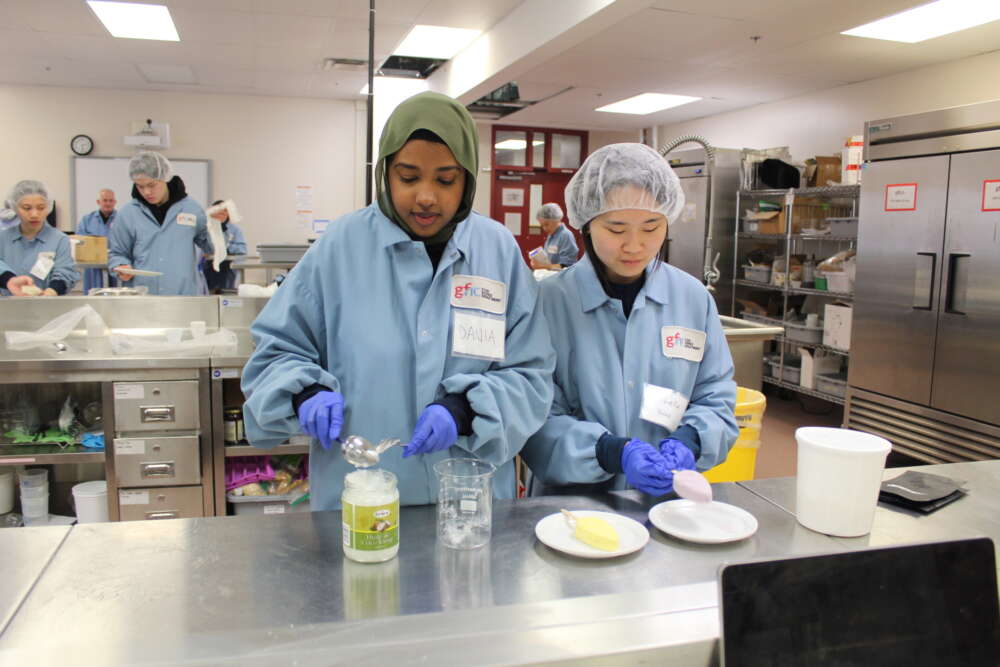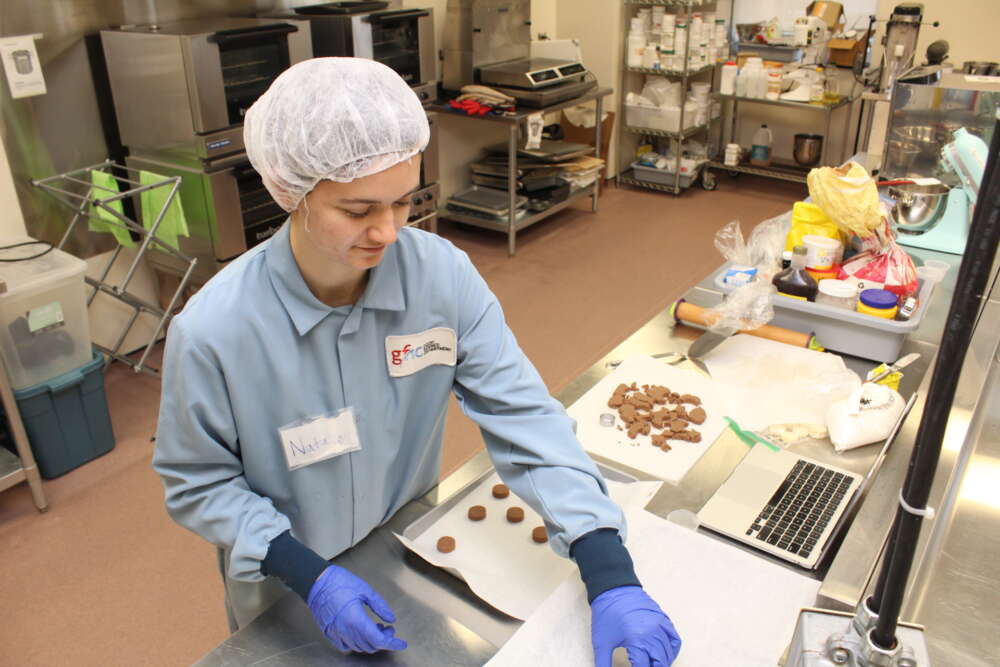Near the end of their winter semester, University of Guelph food science and marketing students dressed in lab coats put the finishing touches on their year-long capstone project. But these aren’t your typical science experiments. These groups have spent the last eight months formulating ideas for new food products and bringing those products to life.
“This is the best-known course of our major,” says Julia Bullard, a fifth-year co-op food science student. “It’s the one everyone anticipates getting into.”
Food Product Development I and II bring together students in the Department of Food Science and Marketing and Consumer Studies, giving them two semesters to research, pitch, create and package a new food product that will be tested by judges at a final showcase.
Graduates of the program have gone on to launch successful careers in the food product development industry, including the founders of Acid League.
Interdisciplinary approach to creating food
When the year-long course begins in September, students choose a challenge to tackle, like creating an alcohol-free beverage or a healthy frozen treat. Then, it’s up to them to take on market research and create a product that can fill the hole in their product category and get to work making their idea a reality.

Bullard’s group worked on flipping a flavour profile, developing a granola bar that’s savoury, not sweet. Fellow food science student Dania Mahadi, also in her fifth year, is making a probiotic-enriched, lactose-free frozen yogurt.
“A key aspect of this course is being able to communicate technical information specific to food science with people from other backgrounds, and vice versa,” Bullard says. “Having marketing students teach us their strategies and blending those perspectives is successful when our communication is sound.”
Classroom learning in real-world scenarios
Once receiving their assignments, Bullard, Mahadi and their fellow classmates researched pricing and placement at the grocery store, labelling and packaging, advertising and testing recipes so others can give it a taste.
“This is a representation of what would occur if they were going out into the industry,” says Dr. Lisa Duizer, one of the course instructors. “They won’t only be interacting with food scientists. They’re going to be working with marketing teams, production teams and quality teams. This gives them a low-risk way to think about what it will be like to interact with people from other disciplines and learn to speak a common language.”
The unique course gives U of G students the opportunity to access state-of-the-art facilities on campus to develop and test their food product. They also apply everything they’ve learned throughout their degree into their final product.
“We’re able to see the products in front of us and see the direct consequences and benefits of using different ingredients,” Bullard says. “This hands-on work adds another dimension to our program.”
Mahadi says the class has given her a deeper understanding of what goes into the food we see on our shelves.
“I used to really underestimate how much thought and work goes into these products,” she says. “In this course, you’re every person in the company, which makes this very different from other courses we’ve taken.”
Learning from the food production industry
Throughout the course, professionals working in the food production industry speak to students about their own experiences out in the world.
“It’s good for students to understand what kinds of roles are out there,” Duizer says. “It gives them a broad lens of what the industry needs.”

Bullard and Mahadi both plan to pursue careers in food development after graduation and credit this course with giving them the skills they need to succeed in the industry.
“This is something I can put on my resume now and it will make a difference for future employment,” Mahadi says.
The students are now finalizing their products and packaging so they’re ready for the industry showcase they’ve been working towards all year. The event runs from 2 to 4 p.m. on Thursday, April 3 in the Food Science Building. Visitors can sample products and learn more about what went into their development.
